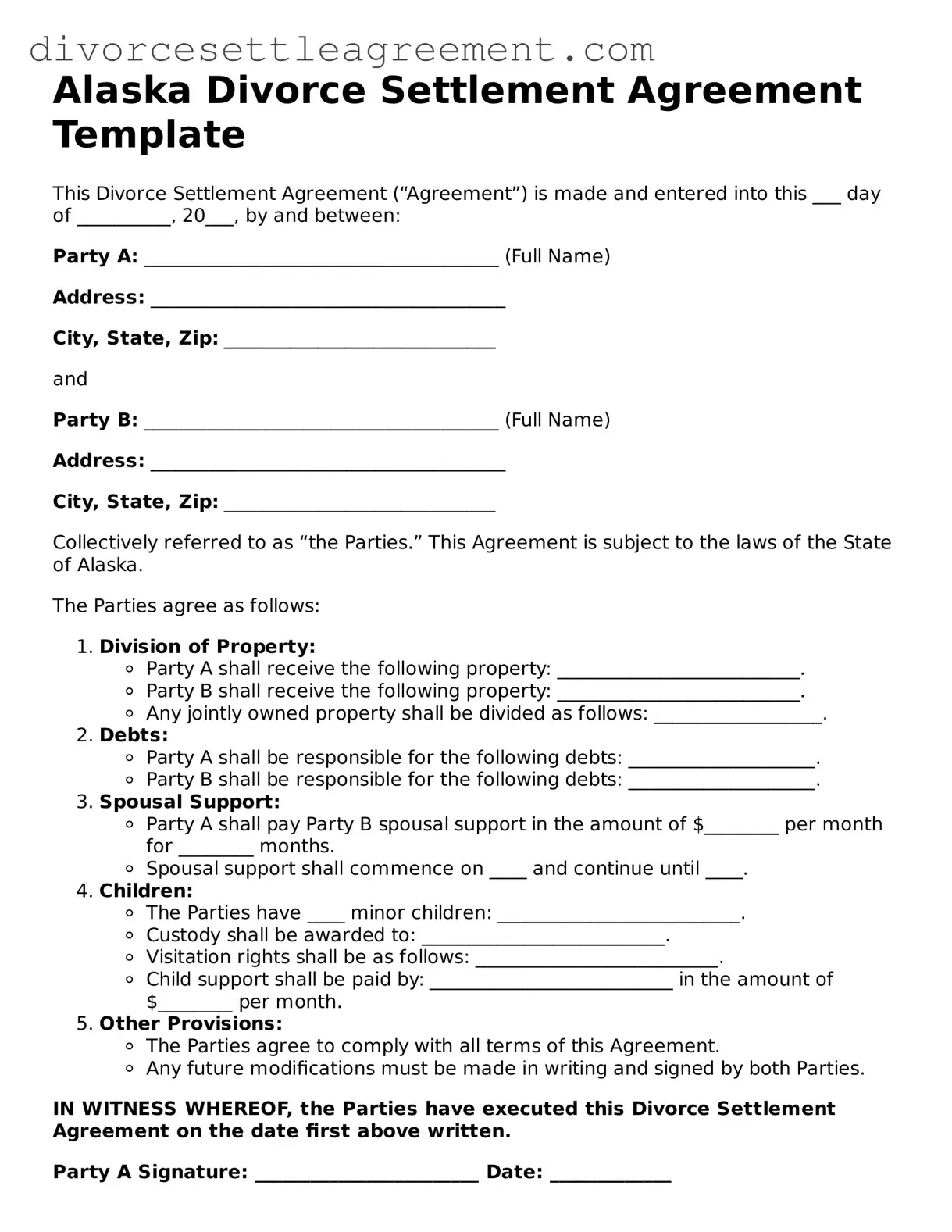What is an Alaska Divorce Settlement Agreement form?
The Alaska Divorce Settlement Agreement form is a legal document used by couples to outline the terms of their divorce. It covers various aspects such as division of property, child custody, child support, and alimony. This agreement is typically negotiated and signed by both parties before finalizing the divorce in court.
Who needs to complete this form?
Both spouses involved in a divorce in Alaska must complete the Divorce Settlement Agreement form if they wish to settle their divorce amicably. This form is essential for couples who have reached an agreement on the terms of their divorce and want to formalize it legally.
What information is required in the form?
The form generally requires personal information about both spouses, including names, addresses, and contact details. Additionally, it includes sections for detailing the division of assets and debts, custody arrangements for children, and any spousal support obligations. Accurate and complete information is crucial for the agreement to be valid.
Can the terms of the agreement be modified later?
Yes, the terms of the Divorce Settlement Agreement can be modified after it has been signed, but both parties must agree to any changes. If the modifications involve child custody or support, they may require court approval to ensure they are in the best interest of the children involved.
Is legal representation necessary to complete this form?
While it is not legally required to have an attorney to complete the Divorce Settlement Agreement form, it is highly advisable. Legal representation can help ensure that the agreement is fair, comprehensive, and complies with Alaska law. An attorney can also assist in negotiating terms that are in the best interest of both parties.
What happens if we cannot agree on the terms?
If the spouses cannot reach an agreement on the terms of the divorce, they may need to go through mediation or court proceedings. A judge will ultimately decide on contested issues such as property division, custody, and support, based on state laws and the specific circumstances of the case.
How do we file the Divorce Settlement Agreement?
Once both parties have signed the Divorce Settlement Agreement, it must be filed with the appropriate court in Alaska. This typically involves submitting the form along with other required documents and paying a filing fee. It is essential to follow local court rules to ensure proper processing of the divorce.
What if one spouse does not comply with the agreement?
If one spouse fails to comply with the terms of the Divorce Settlement Agreement, the other spouse may seek enforcement through the court. This can involve filing a motion for enforcement, which may result in legal consequences for the non-compliant spouse, including potential fines or modifications to the agreement.
Where can I obtain the Alaska Divorce Settlement Agreement form?
The Alaska Divorce Settlement Agreement form can typically be obtained from the Alaska Court System's website or local courthouse. Many legal aid organizations also provide access to these forms and may offer assistance in completing them.
